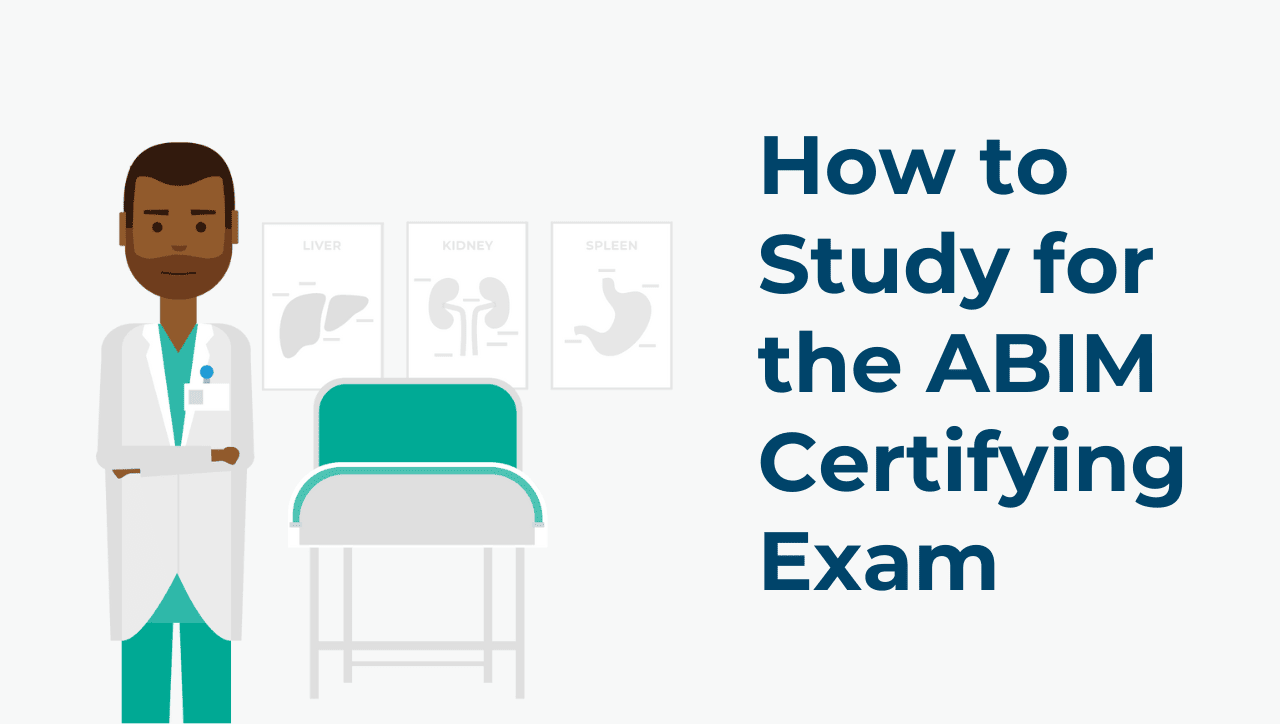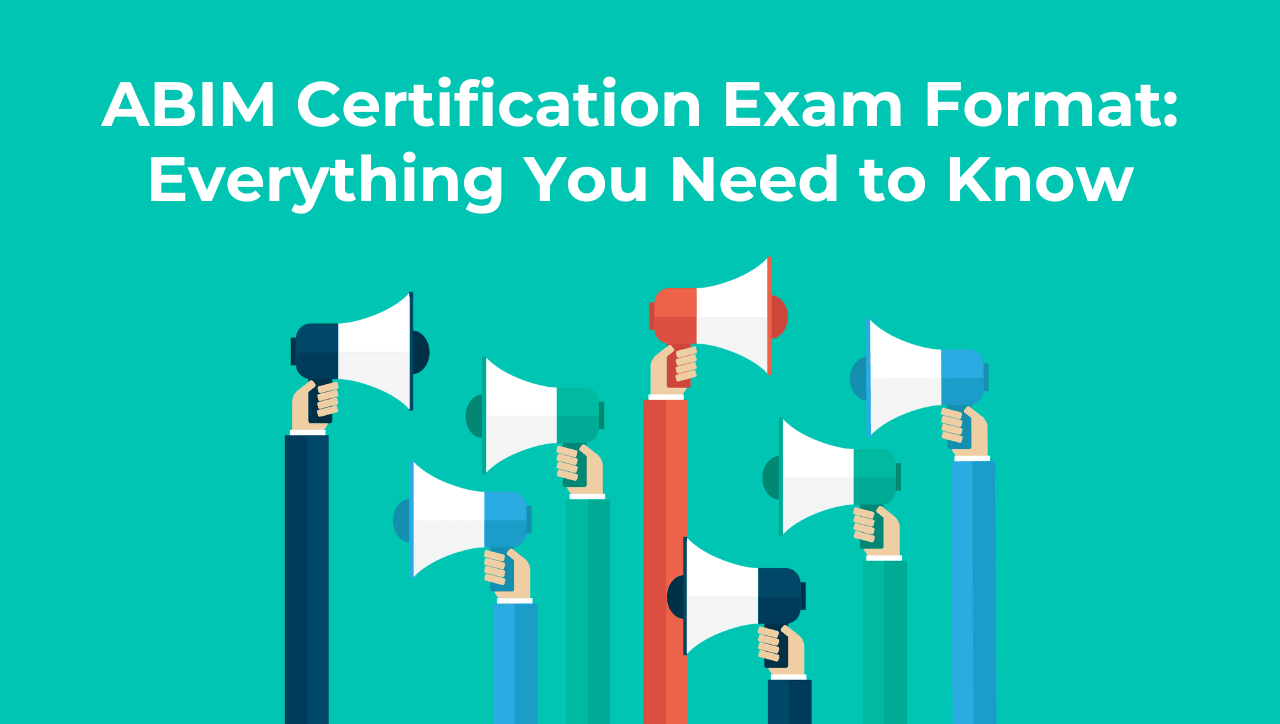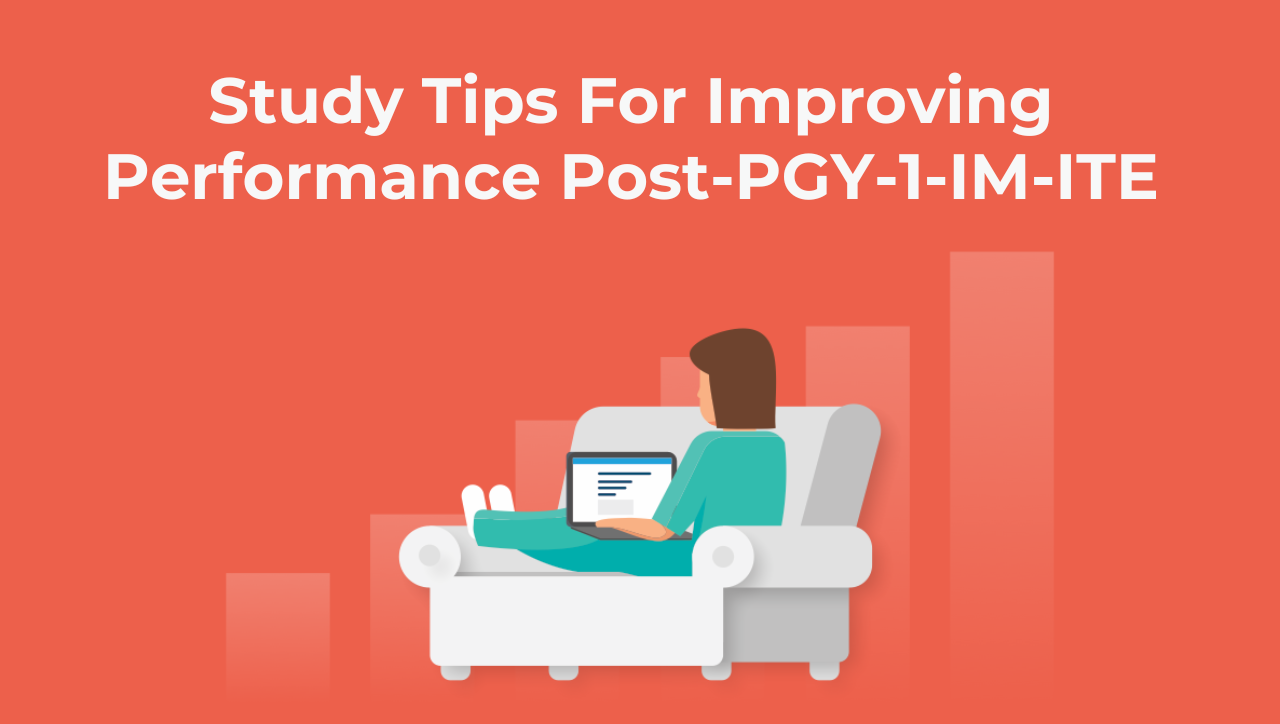How to Approach Internal Medicine Board Preparation
Your ABIM exam is approaching and there is a buzz growing about what to do in order to pass. Everyone is suggesting different resources to use and varying lengths of time you should spend studying. How do you cut through all of the commotion and do what is right for your internal medicine board preparation?
Begin by creating a preparation plan that is personalized for you. First, gather information about the exam. Then, create a detailed study timeline including the learning modalities that suit you. Lastly, monitor your performance and adjust your timeline, as needed. Creating a personalized plan for your internal medicine board preparation will help you study smarter, not harder.
Step 1. Get to Know the ABIM Exam
The ABIM board exam consists of 240 “single-best-answer” questions. This means that each of the answers will have correct elements, but you’re tasked with choosing which answer is the most correct. The questions will assess your abilities to diagnose, order and interpret tests, recommend treatment, assess risk, determine prognosis, and understand pathophysiology. The content breakdown is as follows:
- Allergy and Immunology 2%
- Cardiovascular Disease 14%
- Dermatology 3%
- Endocrinology, Diabetes, and Metabolism 9%
- Gastroenterology 9%
- Geriatric Syndromes 3%
- Hematology 6%
- Infectious Disease 9%
- Nephrology and Urology 6%
- Neurology 4%
- Obstetrics and Gynecology 3%
- Medical Oncology 6%
- Ophthalmology 1%
- Otolaryngology and Dental Medicine 1%
- Psychiatry 4%
- Pulmonary Disease 9%
- Rheumatology and Orthopedics 9%
- Miscellaneous 2%
Be sure to visit the ABIM website for even further breakdown of content. And we strongly urge you to take the online tutorial.
The ABIM exam is 10 hours long and is divided into four sections of 60 questions. You are given 100 minutes of break time to use at your discretion.
Step 2. Create a Study Schedule and Choose Your Resources
Creating a study schedule will ensure you are using your time efficiently. Your schedule should cover all topics on the exam and it should be realistic, goal oriented, and detailed. Allocate more time for subjects that you may be struggling with. It is recommended to study 10-15 hours per week for at least three months. Take each learning modality, starting with the one you feel is most important, and work backwards from the exam date to create a realistic schedule to complete it.
The few weeks before your exam date should be a ramp-up period of long preparation sessions to build your stamina. Also, consider incorporating simulated exams (like the ones TrueLearn offers) in a quiet, non-stimulating environment. This ramp-up period will be your final push to sharpen your preparedness, so plan accordingly.
Don’t overwhelm yourself with too many resources. Instead, focus on quality over quantity. You are a busy resident now; you need to make the most of your time. Quality resources will ensure you aren’t wasting any of it. Choose the learning modalities that suit you. This may include:
- A quality ABIM question bank like TrueLearn. (Learn more about choosing a good question bank.)
- An exam prep course can be useful depending on your learning style. Your residency program may provide a course. If not, read more about choosing one.
- Flashcards, textbooks, lectures, and class notes.
Step 3. Use Different Approaches to Studying
It’s important to study in a variety of ways. When deciding on which study techniques you want to utilize, be sure to keep the exam blueprint in mind. Some methods we recommend are:
- Active recall. This refers to the process of deliberately triggering your memory in order to retrieve a specific piece of information. Do this by completing practice questions on the information you are studying. You’ll want to start taking practice questions about three months before your exam date.
- Study groups. These are a great way to prepare for ABIM because you get exposed to other people’s knowledge, perspectives, and a variety of learning styles. They provide support and motivation, and help you affirm your knowledge base.
- Concept maps and outlines. Use these to make connections between different concepts and help you form a clear clinical picture. You may be inclined to do this digitally, but we suggest writing it on paper. Writing on actual paper produces stronger memory recall. A study from 2021 revealed that participants that used paper showed more brain activity in the hippocampus, an area of the brain that plays a major role in learning and memory.
Step 4. Assess your Progress and Adjust as Needed
A final key to effective internal medicine board preparation is to monitor yourself closely as you advance through your preparation plan timeline. It is important to recognize what your strengths and weaknesses are at any given time during preparation so you can adjust the plan to address your personal needs.
You can accomplish this though taking simulated exams. Insightful data is necessary to assess yourself and adjust your plan accordingly. TrueLearn’s analytics make it easy to identify a number of possible weaknesses such as specific categories, changing your answers from correct to incorrect, or spending too much or too little time on each question. Take this information and re-adjust your plan.
Lifestyle When Studying For Exams
Residency is grueling, we get it. And to top it off you have to make time for studying. You need to be disciplined with your time and lifestyle. Ensure you are getting enough sleep; at least 7 hours per night. Eat healthy food to fuel your brain. Get outside for fresh air and sunlight daily. And lastly, be sure to get in some exercise to get your endorphins flowing.
Looking For A Question Bank For ABIM?
Sign up for TrueLearn today to begin taking practice questions as a part of your internal medicine board preparation.
The TrueLearn platform is integrated with smart data, tracking your performance over time. This allows you to review question types you are commonly missing, shows you where you stand in comparison to the nation in real-time, and even provides your projected score on your upcoming exam based on the practice questions you take.
Test your best with TrueLearn. Sign up today to begin studying smarter for your upcoming ABIM exam.


